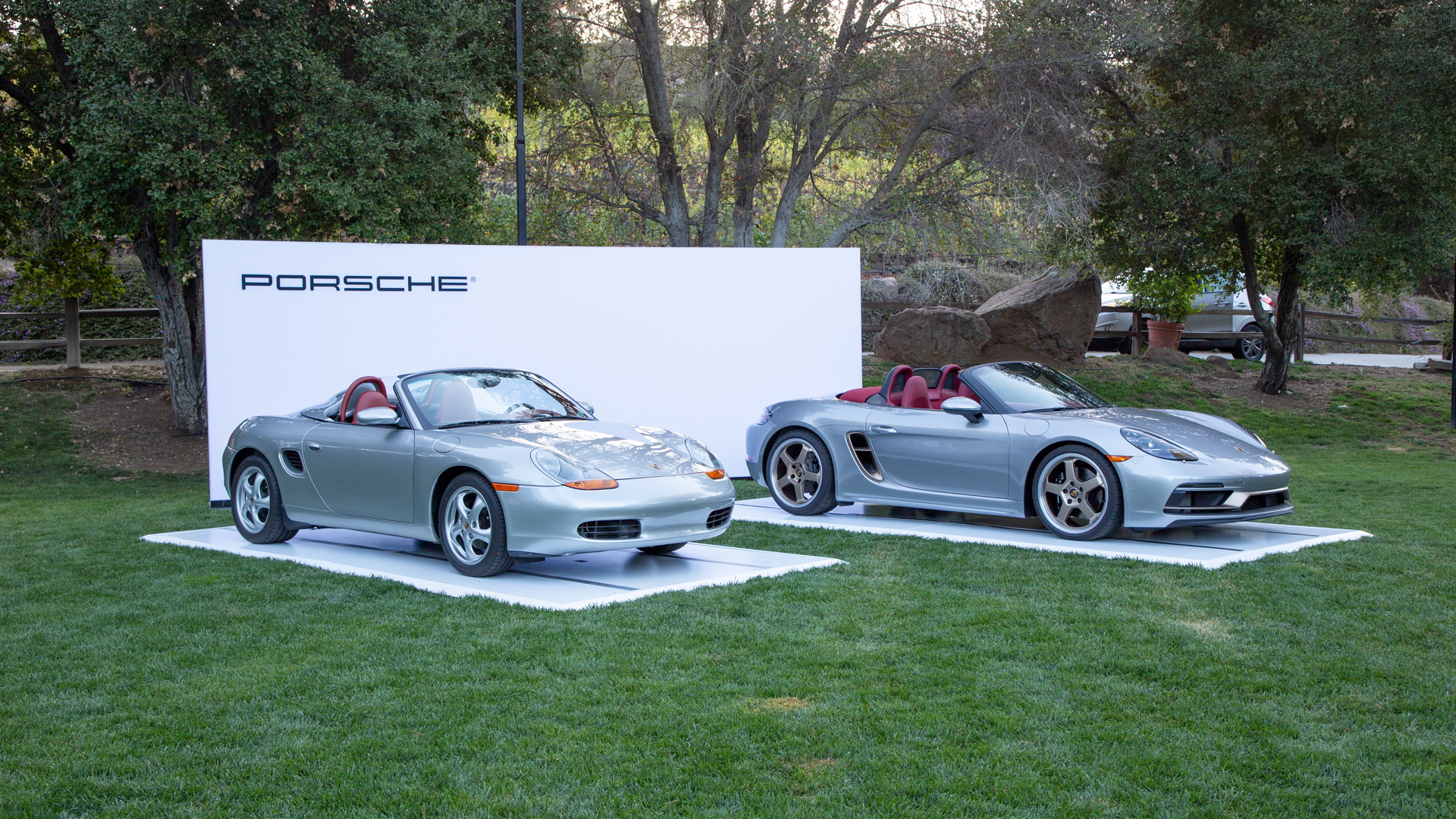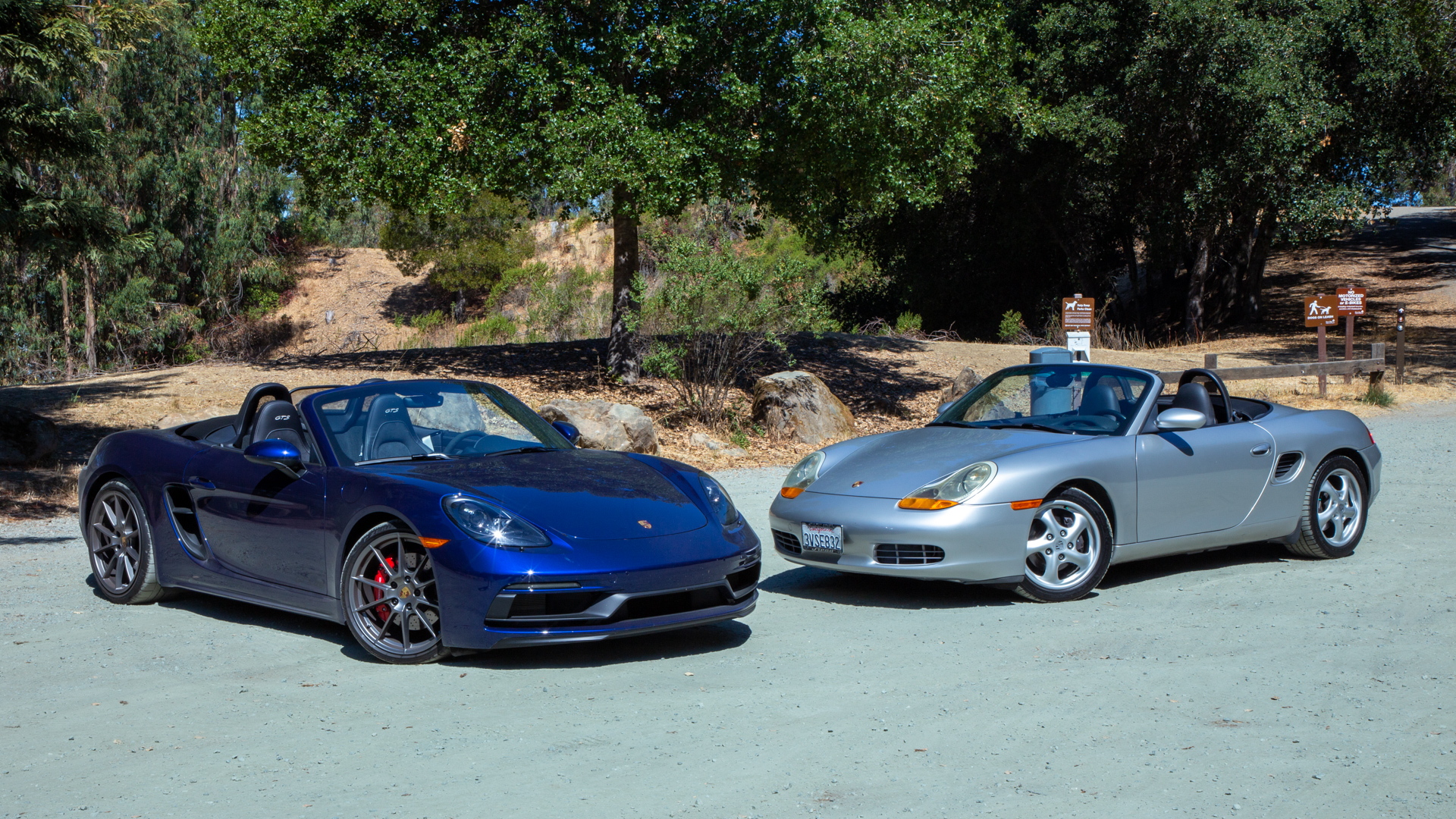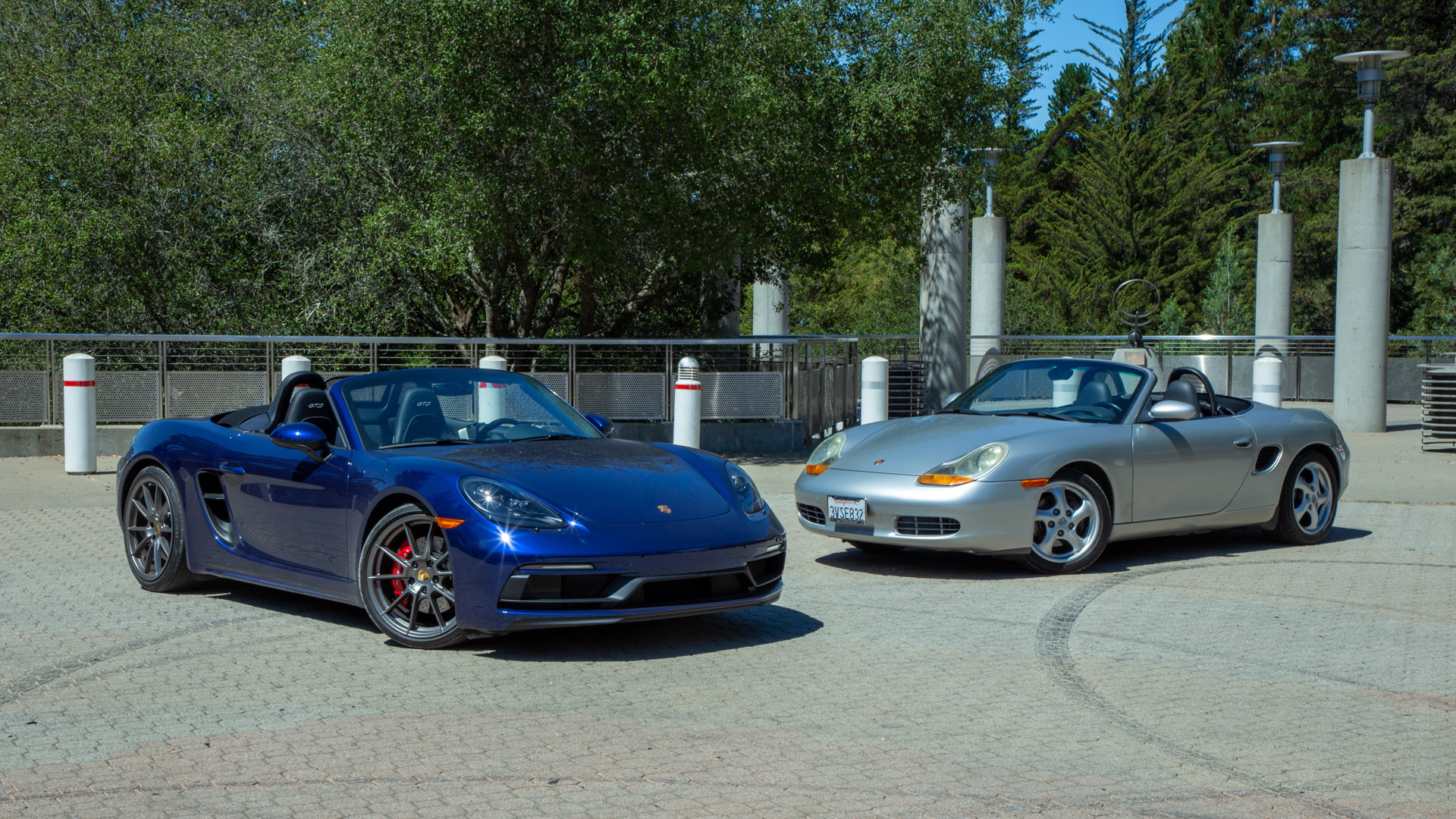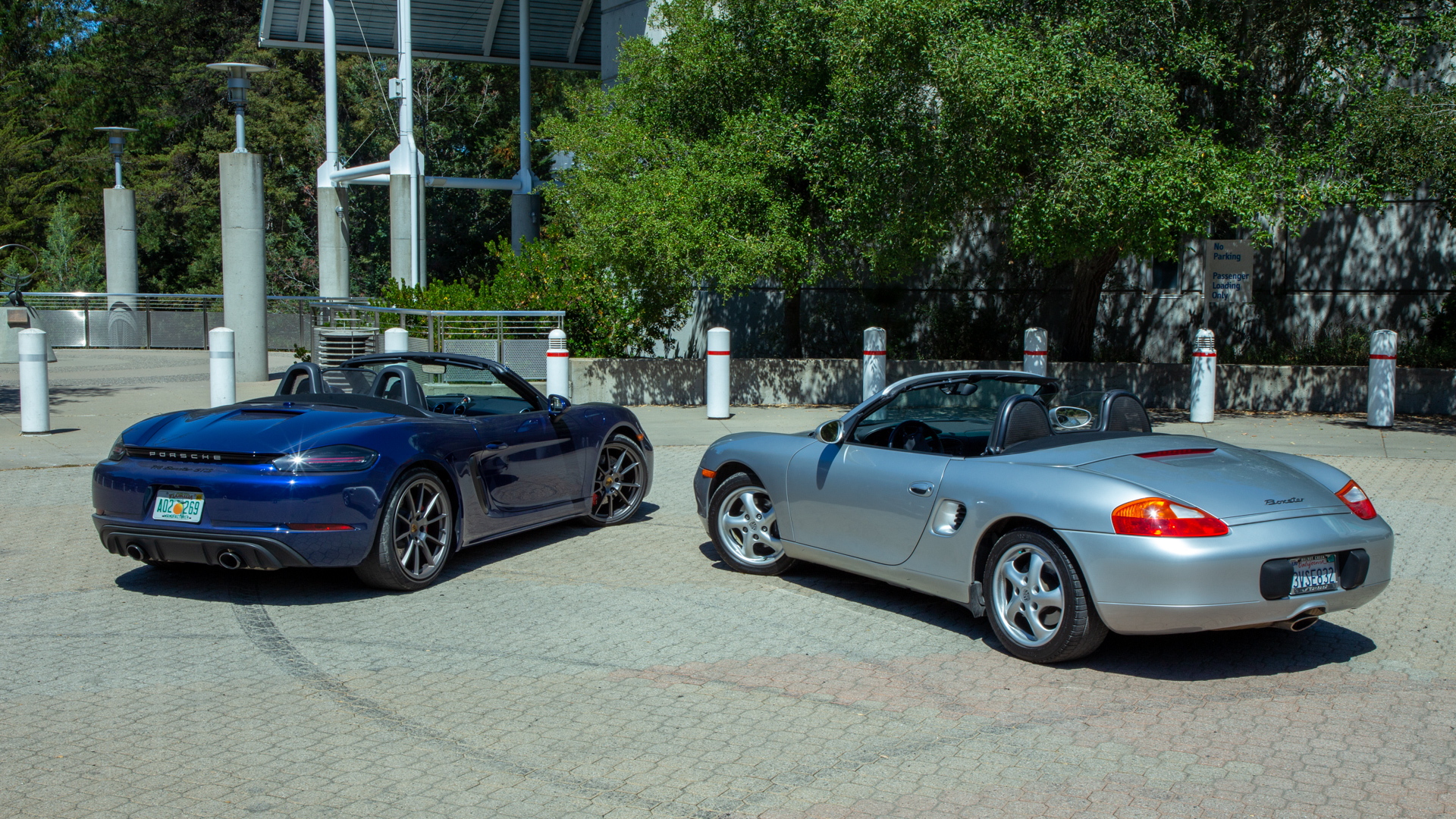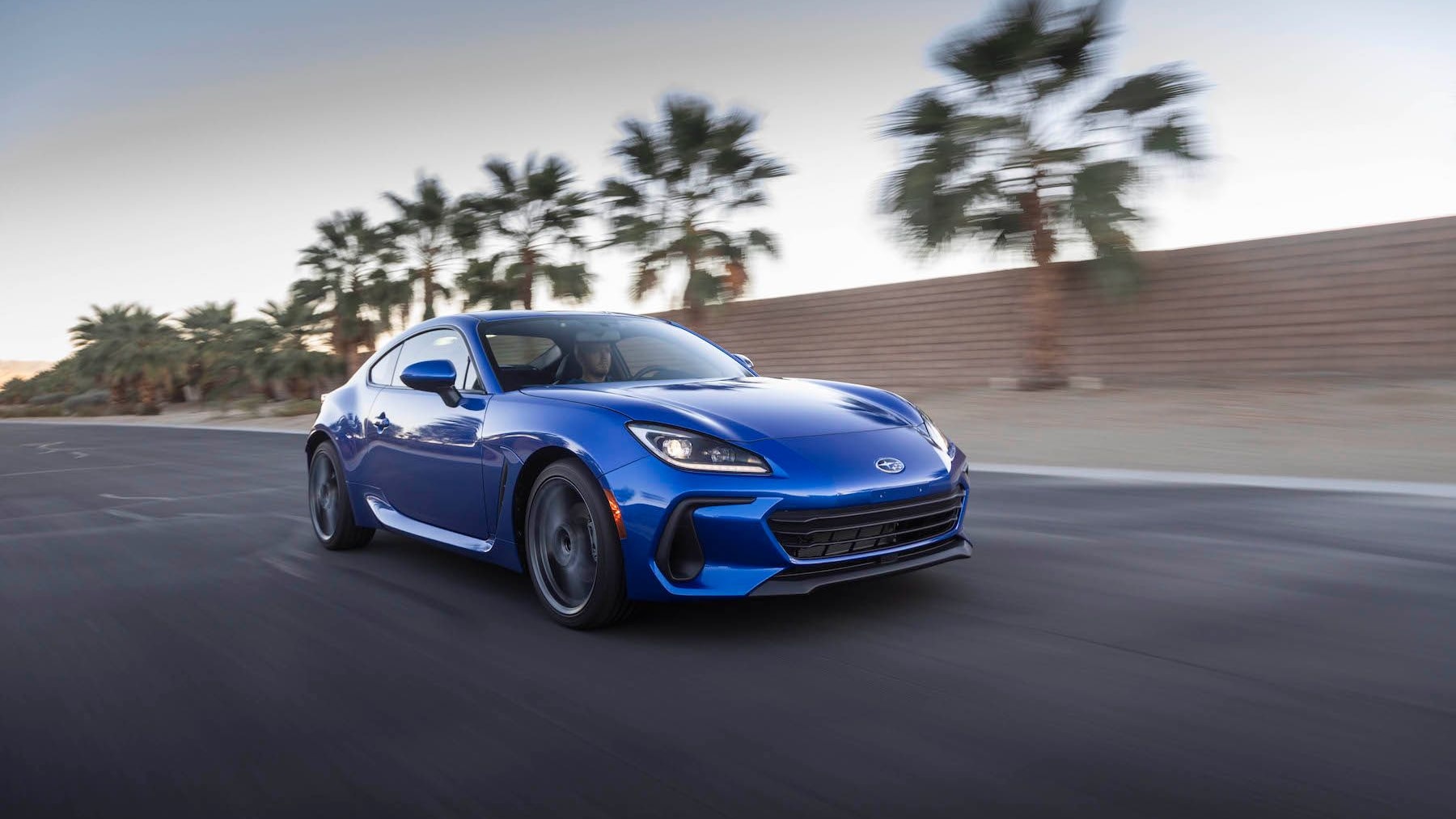The Porsche Boxster celebrates its 25th birthday this year, having made its debut in late 1996 as a 1997 model. It’s not an overstatement to say that this is the car that saved Porsche, which is hard to believe looking at the company’s success in the present day. At the time, Porsche’s model lineup was much more limited. The less loved 928 and 968 were discontinued in 1995, with only an aging air-cooled 911 carrying on after that until the Boxster’s arrival.
This put a lot of pressure on the Boxster (a portmanteau of boxer, in reference to its flat-6 engine, and roadster) to reverse the company’s fortunes and the mid-engine convertible debuted as a concept car at the 1993 North American International Auto Show in Detroit. Though we’ve grown used to the Boxster’s mid-engine design, it was a huge departure from the Porsche designs at the time with its curvier front and rear styling. The production Boxster (generation 986) would end up borrowing heavily from the forthcoming 996 generation of the 911 in large part to save money. The two cars would share the same hood, interior, headlights, front bumper, and engine architecture. But the concept’s design remained very much intact on the final vehicle.
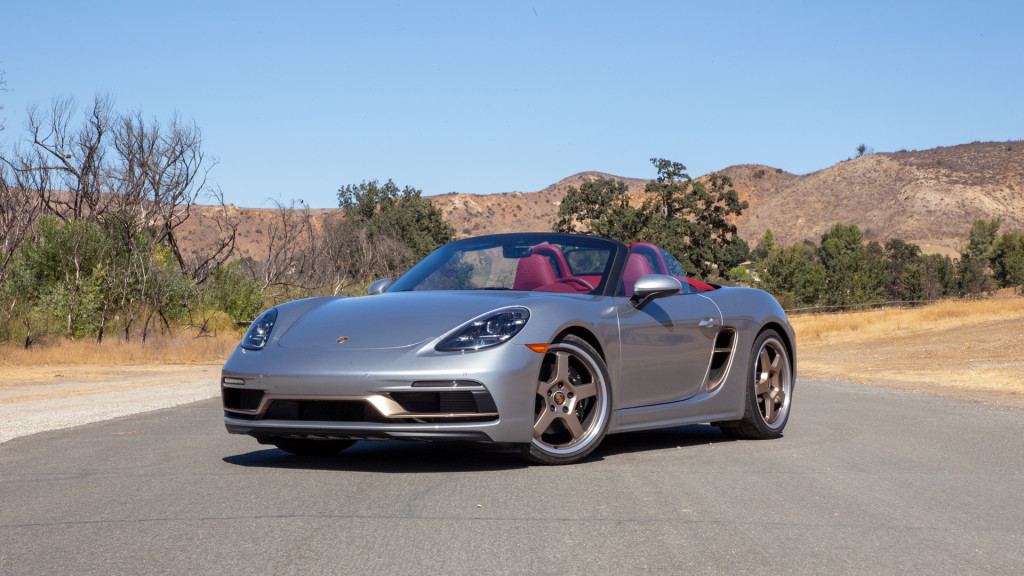
2021 Porsche 718 Boxster 25

2021 Porsche 718 Boxster 25

2021 Porsche 718 Boxster 25
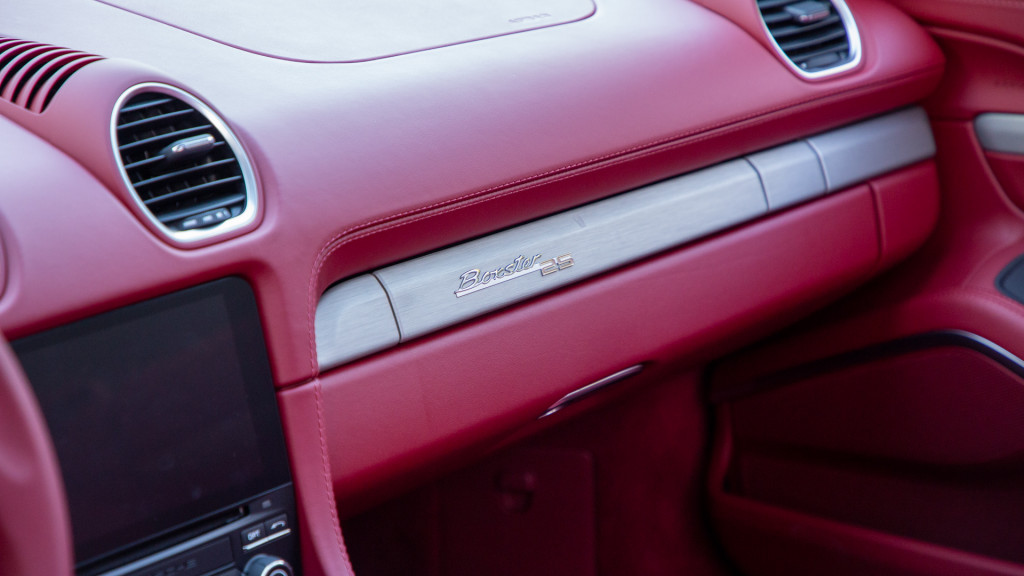
2021 Porsche 718 Boxster 25
Fast forward a quarter century and we’re now on the fourth generation of the Boxster, since renamed the 718 Boxster (generation 982). It has spawned a hard-top counterpart, the Cayman, and Porsche is a different company as well, offering a pair of SUVs and a pair of four-door passenger cars in addition to its two-door sports cars. When the Boxster debuted, it only came with one powertrain and no performance variants (the Boxster S wouldn’t be added until the year 2000). Today’s 718 Boxster comes in five varieties (six if you count the 25th anniversary car), with various powertrain and suspension configurations.
Grant Larson, the man who designed the original 986 Boxster and the special Boxster 25 anniversary model of the car that went on sale this year, said he “did not expect the Boxster to carry on to this year, as a partner to the 911.” But a quarter century later, it does.
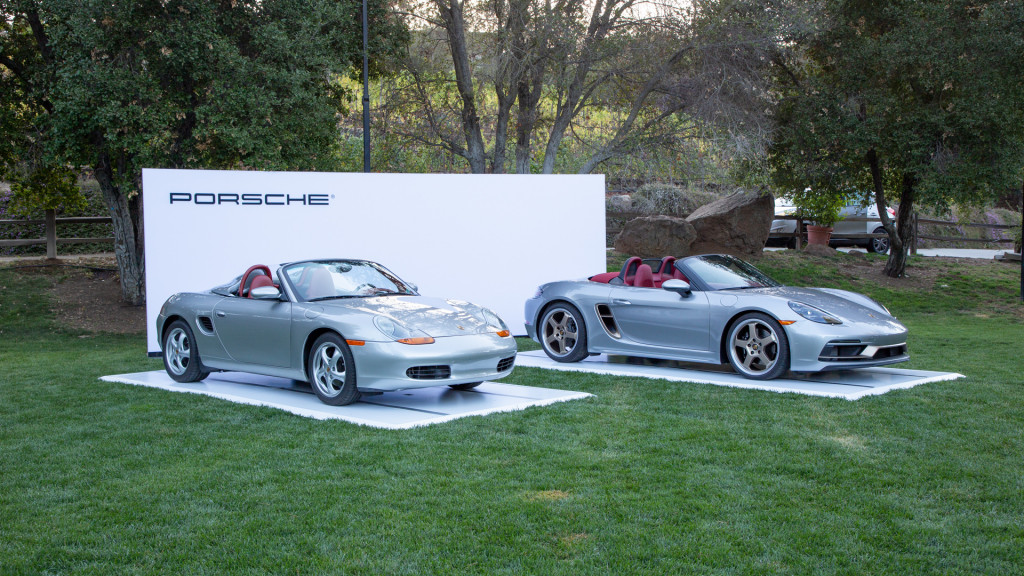
1997 Porsche Boxster and 2021 Porsche 718 Boxster
As a part of the Boxster’s celebration, I traveled to Malibu, California, to sample most of the current Boxster lineup. On display there was the very first 1997 Boxster imported to North America (once owned by Jerry Seinfeld), next to a 2021 Boxster 25. Both cars were styled to pay homage to the original Boxster concept, with red interiors and GT silver metallic paint. The Boxster 25 comes with Neodyme wheels and black/white paint options as well.
Seeing the two cars parked next to each other is quite a sight. Though the new Boxster is sleeker and lower, with more sculpted sides, the styling isn’t that great of a departure from the original Boxster, much like the current 911 employs many of the lines from the 1963 original. Its proportions have remained intact more or less thanks to that mid-engine architecture and rear hips that look pretty much identical.
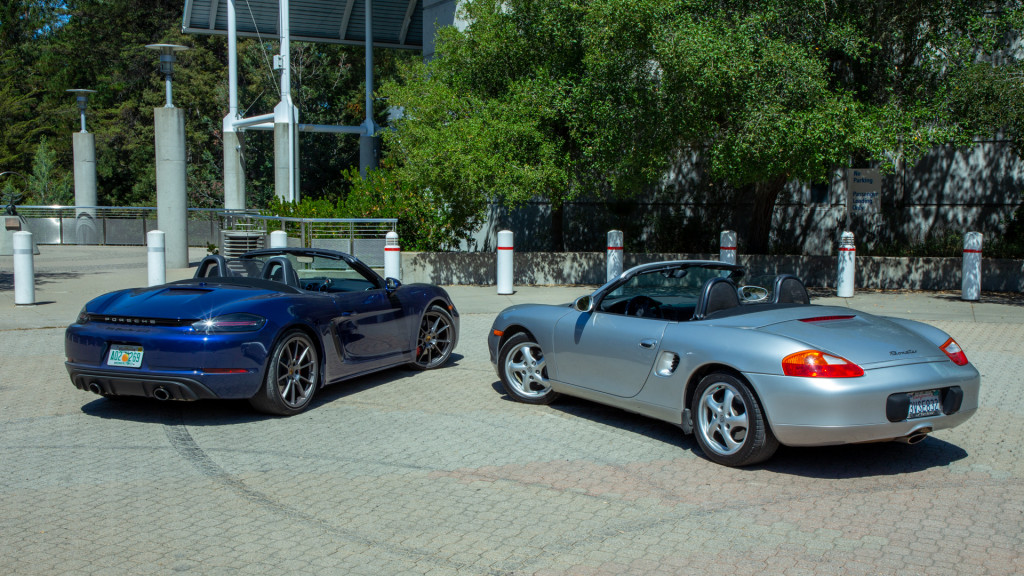
1997 Porsche Boxster and 2021 Porsche 718 Boxster
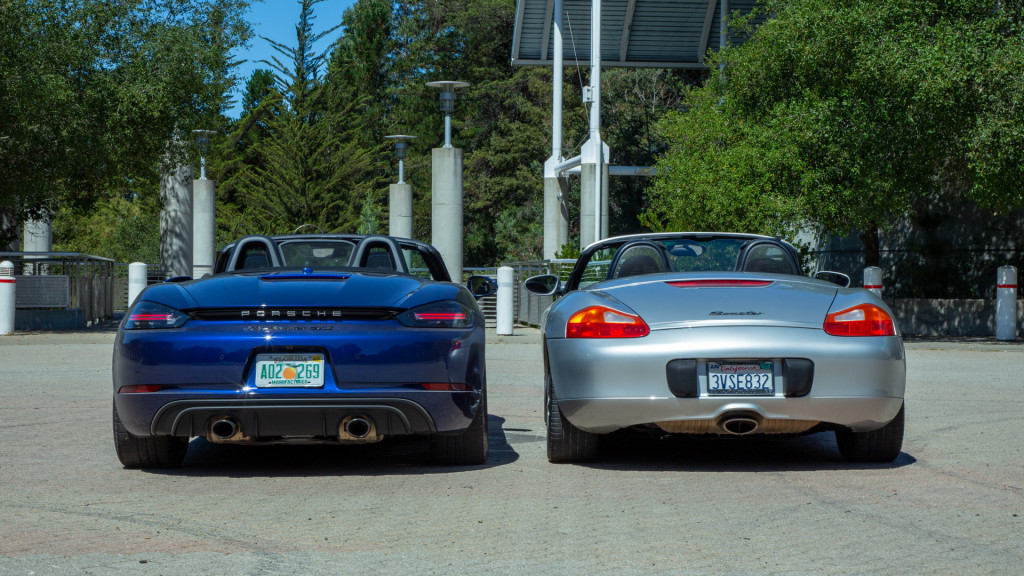
1997 Porsche Boxster and 2021 Porsche 718 Boxster
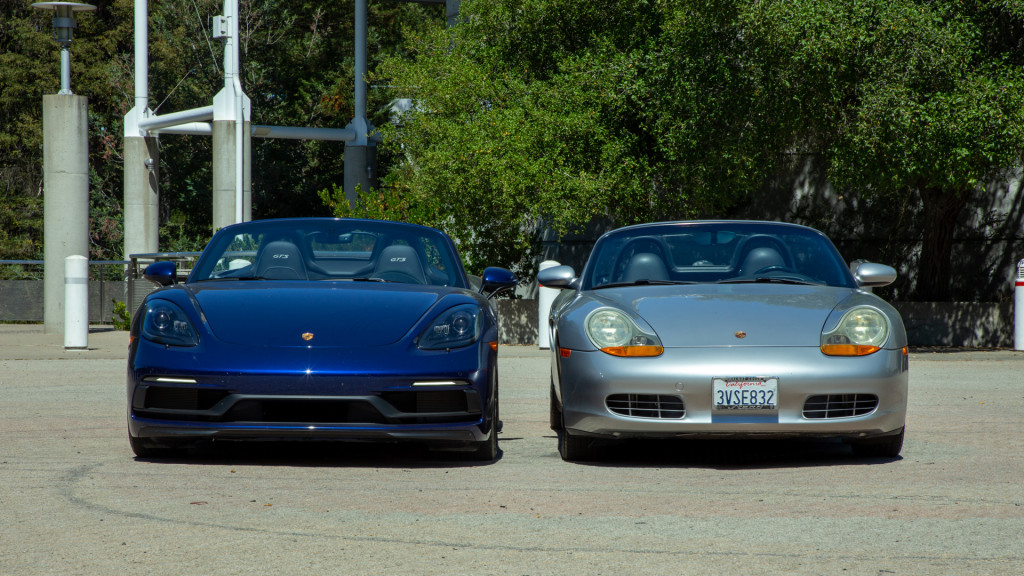
1997 Porsche Boxster and 2021 Porsche 718 Boxster

1997 Porsche Boxster and 2021 Porsche 718 Boxster
The dimensions of the Boxster have changed little over the last two decades, the 1997 car was 170.9 inches long and 70.1 inches wide, with a 95.1-inch wheelbase. Though it looks much lower and wider, the 2021 Boxster has only grown slightly to 172.4 inches long and 70.9 inches wide, with a 97.4-inch wheelbase.
Unfortunately, I wasn’t able to get behind the wheel of that particular 1997 Boxster. But luckily, my father owns a 1997 Boxster of his own, so I took a field trip to put our family roadster up against a 2021 Boxster GTS 4.0 to see if the driving experience offers a congruency similar to the design. Our old Boxster stickered for $48,009 back in 1996. The GTS 4.0 I tested came in at $107,420—quite a bit of inflation.
Finding that common thread means sifting through the massive gap in performance between the two vehicles. The 1997 car came with a 2.5-liter boxer 6-cylinder engine that made 201 hp and 181 lb-ft of torque. It was much quicker with the 5-speed manual transmission, taking 6.7 seconds to get from 0-60 mph versus 7.4 seconds with the 5-speed “Tiptronic” automatic. The 718 Boxster GTS exists in a different performance universe. Its 4.0-liter boxer 6-cylinder makes 394 hp and 309 lb-ft, nearly double the horsepower. It sprints from 0-60 mph in 4.3 seconds with its 6-speed manual, or just 3.8 seconds with the 7-speed dual-clutch automatic (both times also include the Sport Chrono package).
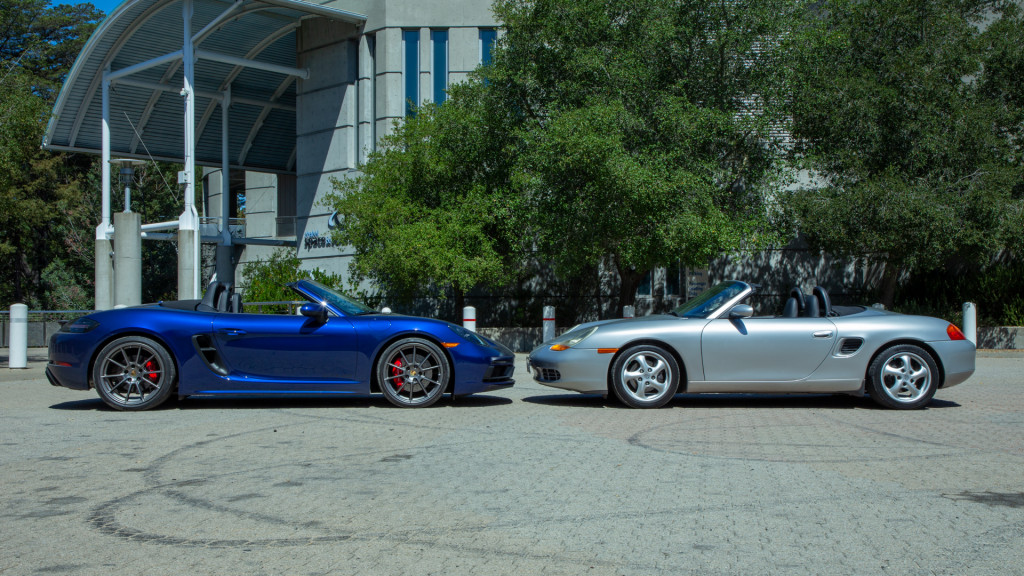
1997 Porsche Boxster and 2021 Porsche 718 Boxster
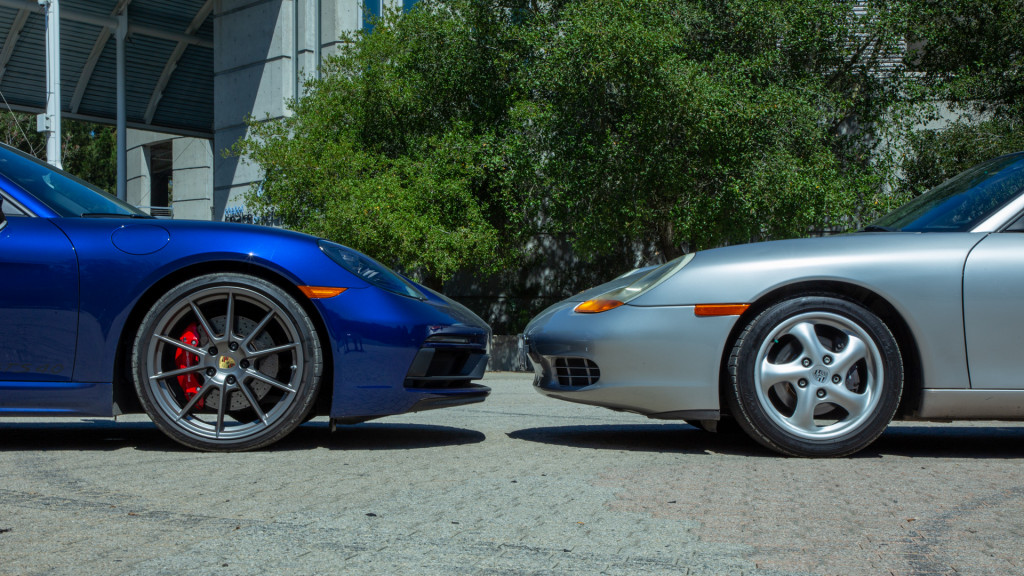
1997 Porsche Boxster and 2021 Porsche 718 Boxster
The gap between modern powertrains (especially those with automatics) is immediately apparent. Though both engines don’t make maximum torque until around 5,000 rpm, the older boxer feels a lot more sluggish at lower speeds. You really have to wind the engine to get to the power, while the GTS feels more explosive from 1,000-4,000 rpm. The older Boxster drives more like a momentum car, while the GTS revs more quickly and gets into its power with greater ease.
Both Boxsters I tested came with the automatic transmissions, and the 5-speed automatic in the old car felt a world apart from today’s 7-speed dual-clutch PDK. This bears out in the acceleration times. The old car was faster to 60 mph with the manual, and the new car is quicker with the automatic. Aside from its slow shifts, the old Tiptronic was annoying for its use of thumb shifters rather than paddles. The PDK, in contrast, shifts faster than I could ever hope to with finely honed shift logic that rarely puts a foot wrong. And in case I want to shift myself, it’s got paddles thankfully.

1997 Porsche Boxster
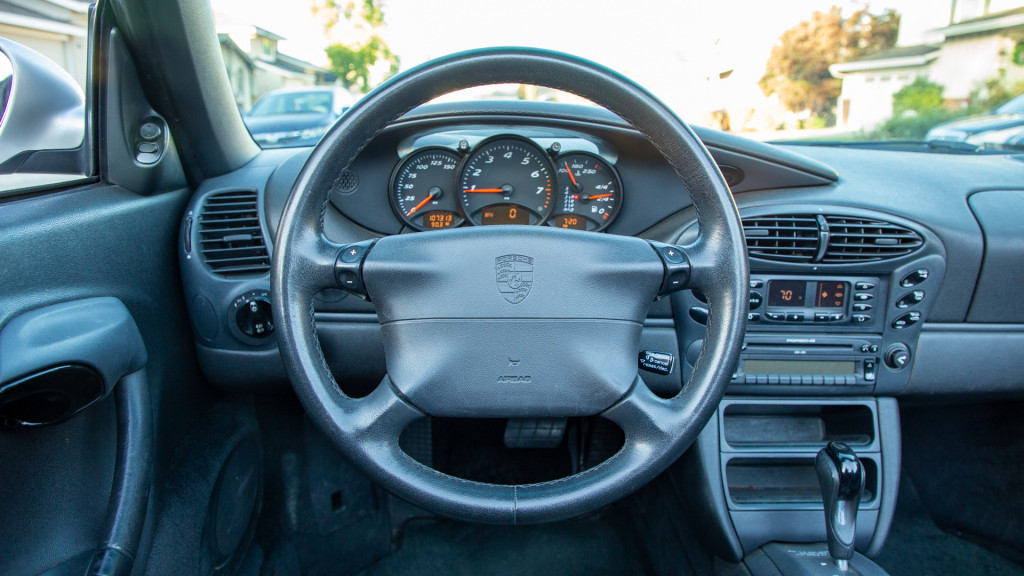
1997 Porsche Boxster
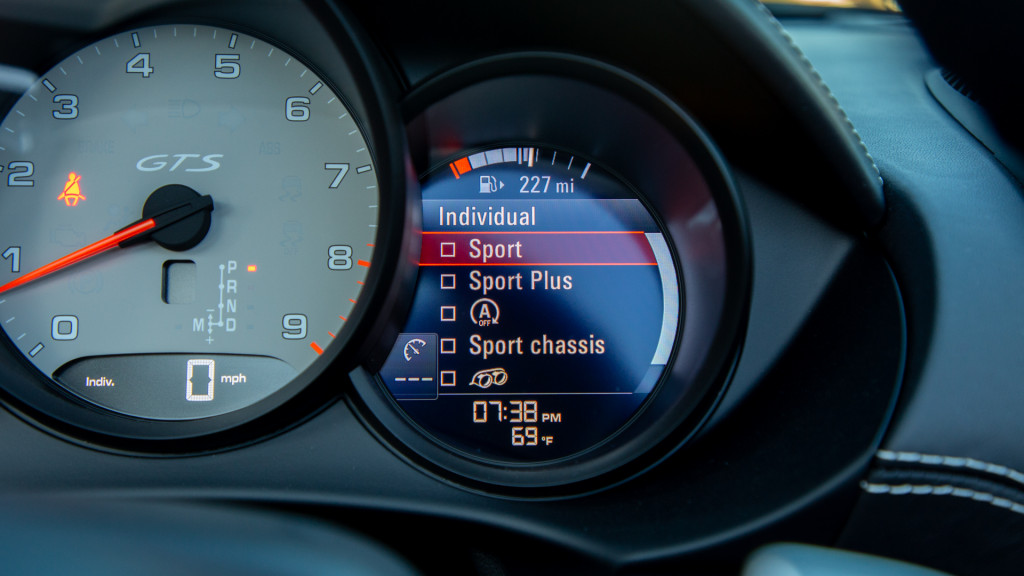
2021 Porsche 718 Boxster GTS 4.0
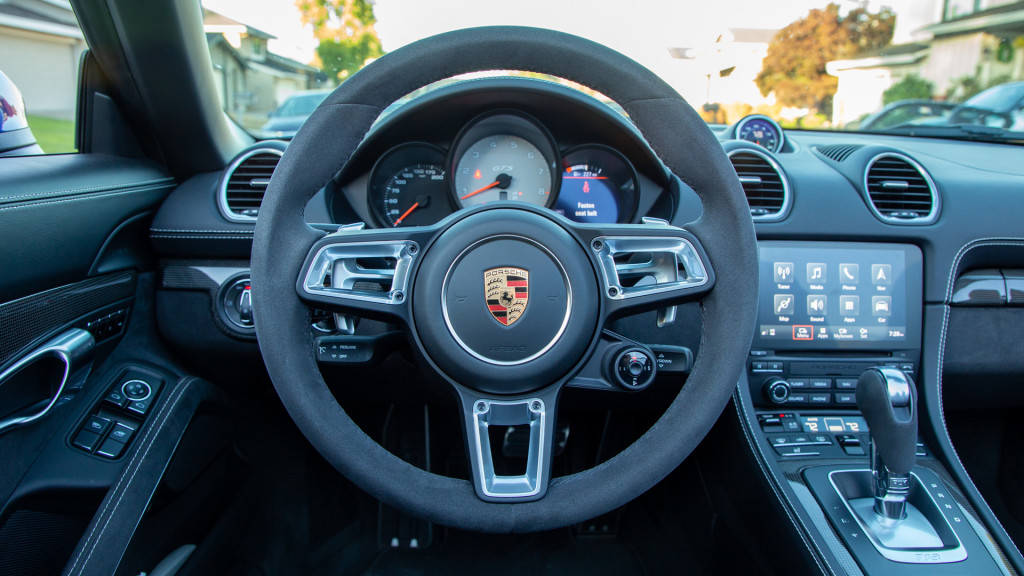
2021 Porsche 718 Boxster GTS 4.0
The throughline between Boxster generations comes more from a shared preternatural sense of handling and balance. The 986 Boxster was a much simpler machine, without adaptive dampers, fancy stability control, or hell, even different drive modes. But even though the 2021 models add on electronic wizardry, the roadster’s core remains the same. Concentrating the engine’s weight in the middle of the car gives each a planted feeling that inspires confidence. When both cars approach the limits of their grip, they don’t break into oversteer so much as glide into it in an easily controlled, delightful fashion. You feel absolutely in control of the car’s dynamics. In this way, the mid-engine Porsches have long been my favorites to drive, more so than the 911.
Though the old car was significantly lighter (2,866 lb versus 3,224 lb), the modern Boxster feels just as tossable and agile. The steering has been tightened up a lot over the years; the old car has a touch of play though the wheel ,while the GTS feels rock solid on center. Even though it's an electronic system versus the old hydraulic setup in the 986, both deliver the appropriate amount of feedback.
Underneath the cars, the suspension setups are totally different and speak to the differences in eras. The old Boxster uses passive dampers, while the GTS has adjustable dampers with multiple settings. Even in its softest setting, the GTS is still much more rigid than the old Boxster, which has more body roll and dives harder under braking. But that also makes it more comfortable in day-to-day driving. It also has a noticeably higher seating position than the GTS, making entry and exit easier, but detracting somewhat from the low-set sporty feel.
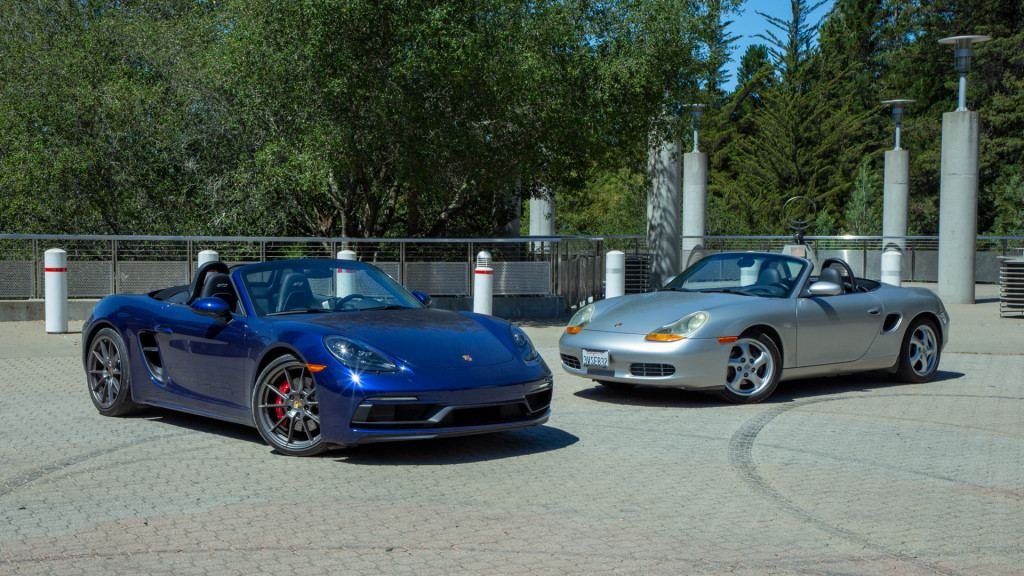
1997 Porsche Boxster and 2021 Porsche 718 Boxster
Driving them back-to-back on the same road, I came away with a different sort of appreciation for each car. The old Boxster’s balance and simplicity were refreshing, but the GTS’s raw power and suspension wizardry offered a much more visceral experience. Though they go about it in different fashions, both are true driver’s cars.
Out of the rest of the 718 Boxster lineup, my preferences will always skew toward the naturally aspirated 4.0-liter crowd versus the turbo-4s that power the Boxster, Boxster T, and Boxster S. The smaller engine is a great one and not deserving of all of the vitriol it gets from some corners of the Porsche universe, but there’s no denying that the power delivery and especially the sound of the 4.0 is more evocative.
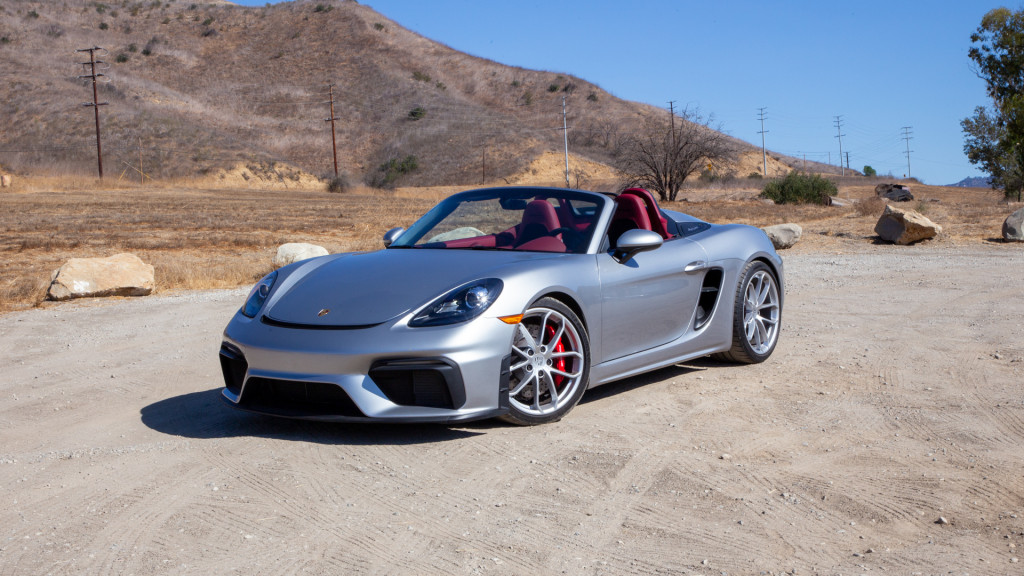
2021 Porsche 718 Boxster Spyder
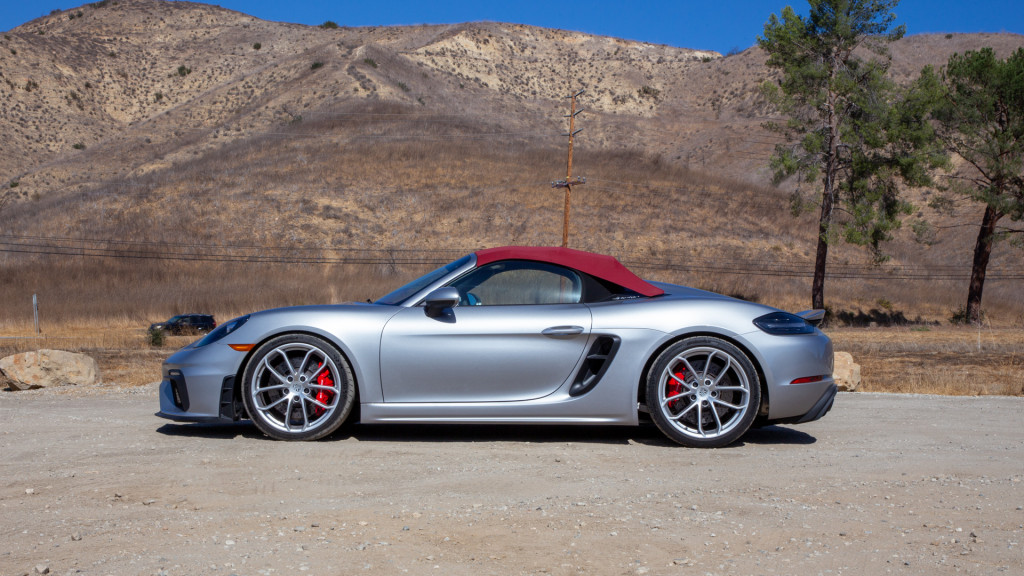
2021 Porsche 718 Boxster Spyder
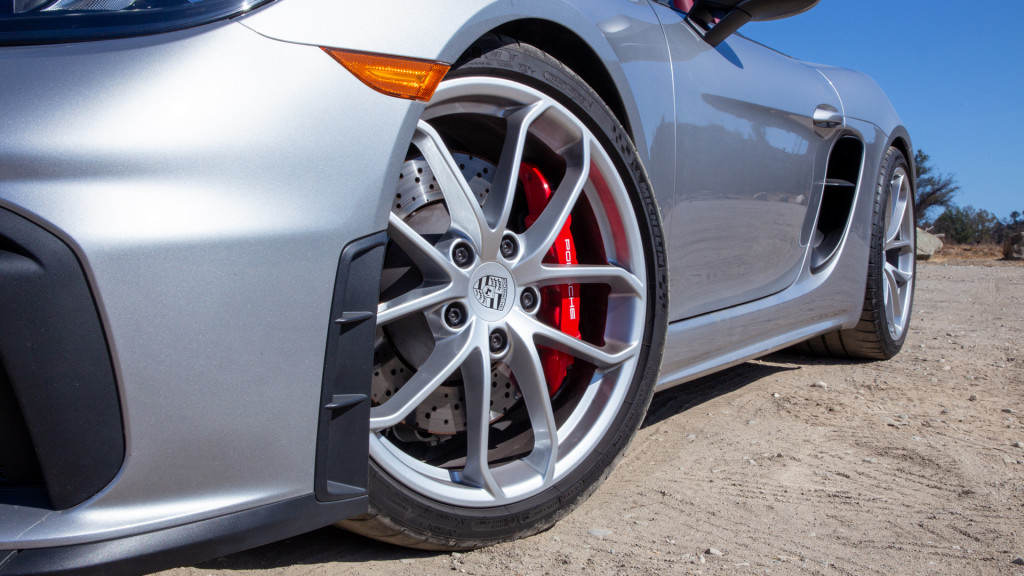
2021 Porsche 718 Boxster Spyder
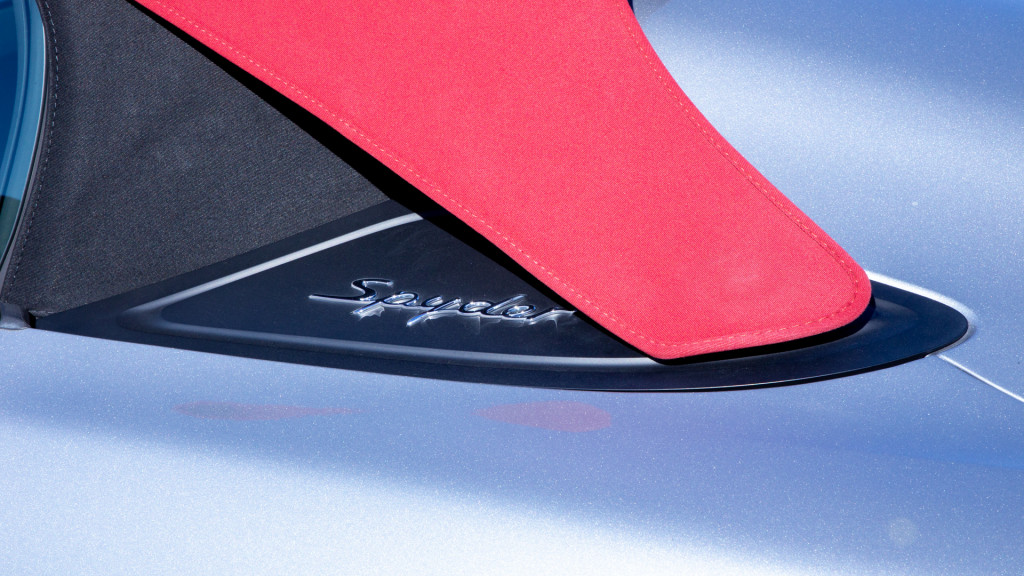
2021 Porsche 718 Boxster Spyder
The 718 Boxster Spyder, with its GT3 front axle and brakes, up-tuned engine, and short throw 6-speed manual is the sharpest of the bunch. If I were choosing a Boxster to own just for the weekends, the Spyder would be the choice. The sound from its exhaust is more intoxicating and its manually operated soft-top is less of an exercise in frustration than previous generations.
But for a car to commute in or to drive every day, I keep going back to the GTS 4.0 with the automatic transmission. It’s a touch more comfortable, putting the top up and down is much easier, and the automatic is so good that I don’t miss the manual in most cases (especially in traffic).
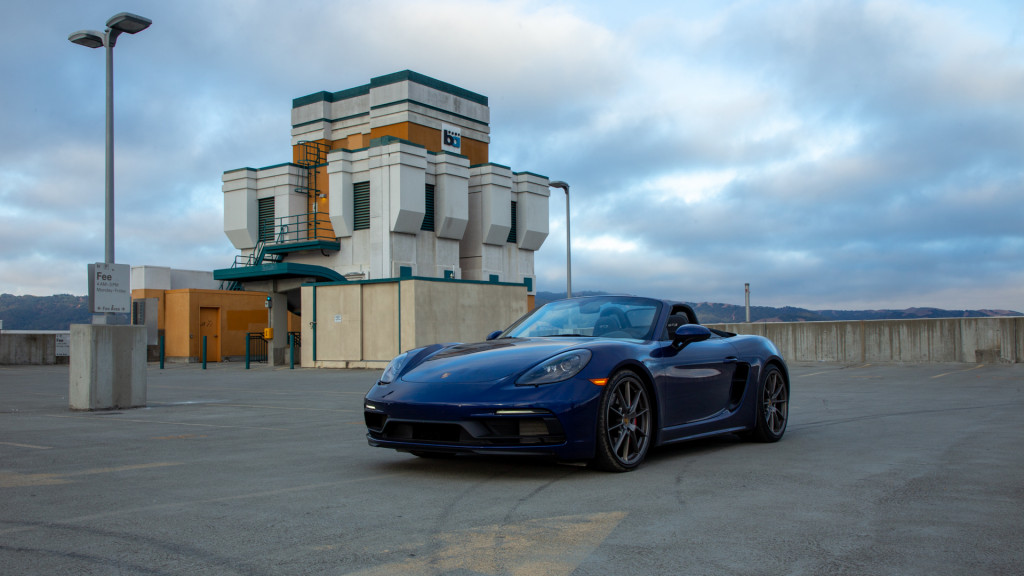
2021 Porsche 718 Boxster GTS 4.0
Driving Boxsters born 25 years apart illuminated even more why this car is so special. The secret to its longevity is its joy. Grab a Boxster from any era and I guarantee it will leave a smile on your face.
Porsche paid for food and lodging, and the author’s dad paid for a weekend toy for Motor Authority to bring you this firsthand report.
